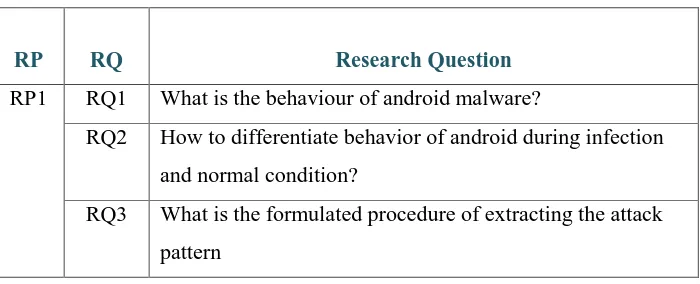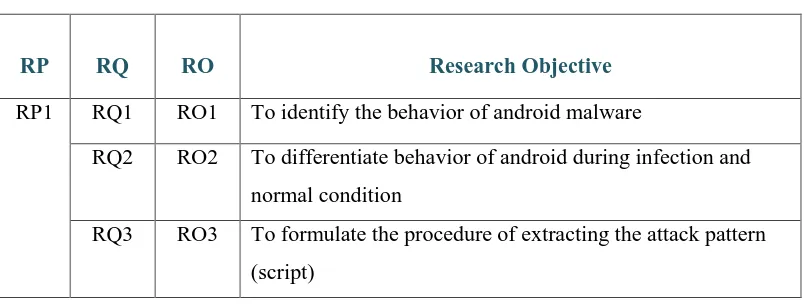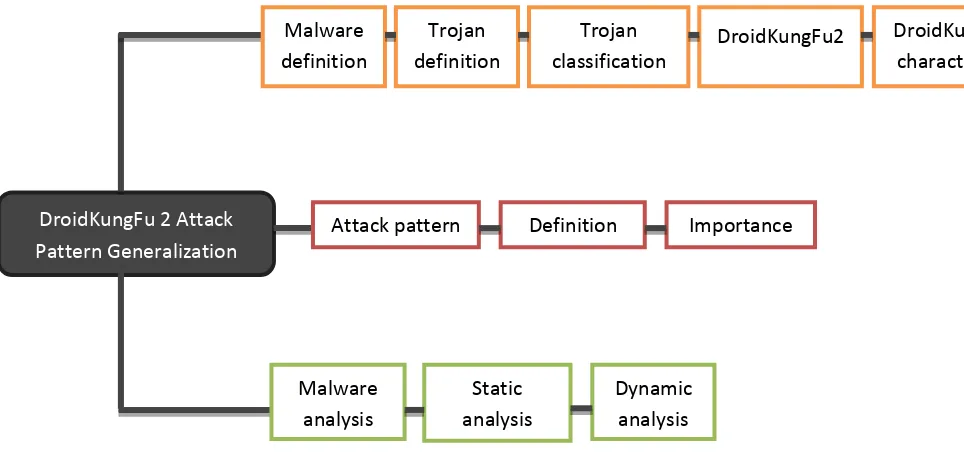BORANG PENGESAHAN STATUS TESIS*
JUDUL :
SESI PENGAJIAN : _ _ _ _
Saya mengaku
membenarkan tesis Projek Sarjana Muda ini disimpan di Perpustakaan Fakulti Teknologi Maklumat dan Komunikasi dengan syarat-syarat kegunaan seperti berikut:
Tesis dan projek adalah hakmilik Universiti Teknikal Malaysia Melaka.
Perpustakaan Fakulti Teknologi Maklumat dan Komunikasi dibenarkan membuat salinan untuk tujuan pengajian sahaja.
Perpustakaan Fakulti Teknologi Maklumat dan Komunikasi dibenarkan membuat salinan tesis ini sebagai bahan pertukaran antara institusi pengajian tinggi.
** Sila tandakan (/)
SULIT (Mengandungi maklumat yang berdarjah keselamatan atau kepentingan Malaysia seperti yang termaktub di dalam AKTA RAHSIA RASMI 1972)
TERHAD (Mengandungi maklumat TERHAD yang telah ditentukan oleh organisasi/badan di mana penyelidikan dijalankan)
TIDAK TERHAD
(TANDATANGAN PENULIS) (TANDATANGAN PENYELIA)
Alamat tetap
CATATAN: * Tesis dimaksudkan sebagai Laporan Projek Sarjana Muda (PSM). ** Jika tesis ini SULIT atau TERHAD, sila lampirkan surat
daripada pihak berkuasa. 2010 / 2011
ANALYSIS OF ANDROID MALWARE (DROIDKUNGFU 2) THROUGH THEIR BEHAVIOR USING STATIC ANALYSIS
ALIAA SYAHIRAH BT ABD RASHID
Kelompok 5, Block A-2-18,
ANALYSIS OF ANDROID MALWARE (DROIDKUNGFU 2) THROUGH THEIR BEHAVIOR USING STATIC ANALYSIS
ALIAA SYAHIRAH BT ABD RASHID
This report is submitted in partial fulfilment of the requirements for the Bachelor of Computer Science (Computer Networking)
FACULTY OF INFORMATION AND COMMUNICATION TECHNOLOGY UNIVERSITI TEKNIKAL MALAYSIA MELAKA
i
DECLARATION
I hereby declare that this project report entitled
ANALYSIS OF ANDROID MALWARE (DROIDKUNGFU 2) THROUGH THEIR BEHAVIOR USING STATIC ANALYSIS
is written by me and is my own effort and that no part has been plagiarized without citations.
__________________________________
STUDENT : ALIAA SYAHIRAH BT ABD RASHID
Date
_______________________________________________ SUPERVISOR : PROF MADYA DR. MOHD FAIZAL BIN ABDOLLAH Date
: 29 Ogos 2013
ii
DEDICATION
This project is especially dedicated to my lovely parents who have inspired me all this while. They thought me to solve the entire problem calmly instead of run from it. Without their sincere love and continuous support for me, this research may not be successfully complete. I would like to dedicate this research project work to my family and all my fellow friends for giving me fully encouragement to complete this research project. Not forgotten, I dedicate this work to my supervisor for his guidance, encouragement, and support for the sake of this project completion.
iii
ACKNOWLEDGEMENTS
iv ABSTRACT
v ABSTRAK
vi
TABLE OF CONTENT
CHAPTER SUBJECT PAGE
DECLARATION i
DEDICATION ii
ACKNOWLEDGEMENT iii
ABSTRACT iv
ABSTRAK v
TABLE OF CONTENT vi
LIST OF FIGURES x
LIST OF TABLES xiii
1.0 CHAPTER I: INTRODUCTION
vii
2.2.2 Malware 11
2.2.3 Trojan 13
2.2.4 Trojan classification 13
2.2.5 DroidKungFu 2 14
2.2.6 DroidKungFu 2 characteristic 15
viii
4.0 CHAPTER IV: DESIGN AND IMPLEMENTATION
4.1 Introduction 26
5.3.2 Comparison between normal and abnormal 61 5.3.3 General malware attack pattern 62
ix 6.0 CHAPTER VI: CONCLUSION
6.1 Introduction 66
6.2 Research Summarization 66
6.3 Limitations 67
6.4 Contributions 68
6.4.1 Behavior Profiling 68
6.5 Future Works 68
6.6 Conclusion 68
REFERENCES 69
APPENDIX A 71
APPENDIX B 79
x
LIST OF FIGURES
FIGURES TITLE PAGE
Figure 2.1 Literature review phase 9
Figure 2.2 Android Architecture 10
Figure 2.3 Malware distribution 11
Figure 3.1 Five phase of methodology 21
Figure 3.2 Milestone of research project 24
Figure 3.3 Gantt chart of research project 25
Figure 4.1 Components in ApkTool 30
Figure 4.2 Components in Dex2jar 31
Figure 4.3 Example of JD-GUI 32
Figure 4.4 Process of extracting the .apk file 33 Figure 4.5 Process of script on extracting the 34
.apk file using netbean
Figure 4.6 Process of script in searching malware 35 parameter
Figure 4.7 VMware Workstation 8 36
Figure 4.8 Windows 7 37
Figure 4.9 SDK manager 37
Figure 4.10 ApkTool .zip file 38
Figure 4.11 Command prompt to install apktool 38
Figure 4.12 Dex2jar .zip file 39
Figure 4.13 Command prompt to install dex2jar 39
Figure 4.14 JD-GUI 40
Figure 4.15 Decode malware using apktool 40
xi
Figure 4.17 File for „test 1‟ malware 42
Figure 4.18 Convert to .jar file using dex2jar 42 Figure 4.19 „test 1.jar‟ file appeared at desktop 42 Figure 4.20 Open „test 1.jar‟ file using JD-GUI 43
Figure 4.21 SDK platform-tools 43
Figure 4.22 Interface to launch the emulator 44
Figure 4.23 Menu screen for emulator 44
Figure 4.24 Adb install using command prompt 45 Figure 4.25 Malware appeared in menu screen 45 Figure 5.1 Process of script on extracting the 47
.apk file using netbean
Figure 5.2 Process of script in searching malware 48 parameter
Figure 5.3 Mobile Sandbox overview 50
Figure 5.4 “com.eguan.state” in jd-Gui 50
Figure 5.5 URLs found in code 51
Figure 5.6 Code for Root exception 51
Figure 5.7 Code malicious get the data 52
Figure 5.8 Update information function 52
Figure 5.9 Mobile Sanbox overview 53
Figure 5.10 “com.eguan.state” in jd-Gui 53
Figure 5.11 URLs found in code 54
Figure 5.12 Code for Root exception 54
Figure 5.13 Code malicious get the data 55
Figure 5.14 Update information function 55
Figure 5.15 Mobile Sanbox overview 56
xii
Figure 5.17 URLs found in code 57
Figure 5.18 Code for Root exception 57
Figure 5.19 Code malicious get the data 58
Figure 5.20 Update information function 58
Figure 5.21 First script output 59
Figure 5.22 Second script output 60
Figure 5.23 Abnormal apk folder 61
Figure 5.24 Components assest folder in jd-gui 61
Figure 5.25 Normal .apk folder 61
Figure 5.26 Code normal .apk 62
Figure 5.27 Overview from Virus Total system 62
Figure 5.28 DNS network traffic 63
Figure 5.29 Http network traffic 64
xiii
LIST OF TABLES
TABLE
TITLE
PAGE
Table 1.1 Research problem 2
Table 1.2 Research question 3
Table 1.3 Research objective 4
Table 2.1 Definition of Malware 12
Table 2.2 Classificition of Trojan 14
Table 4.1 Hardware requirement for PC 27
Table 4.2 Hardware requirement for Laptop 28
Table 5.1 Sample .apk file used 49
1 CHAPTER I
INTRODUCTION
1.1 Introduction
In recent years, there is an explosive growth in smartphone sales and adoption. Unfortunately, the increasing adoption of smartphones comes with the growing prevalence of mobile malware. Malware is short for “malicious software” as that is precisely what it is. Malware defines an entire class of malicious software. Malware includes computer viruses, worms, Trojans, adware, spyware, crimeware, scareware, rootkits and other unwanted programs. Malware can not only be annoying to a computer user, but it can also end up being costly (What is Spyware).
2
apps. As the most popular mobile platform, Google‟s Android overtook others to become the top mobile malware.
This project will use static analysis to analyse the malware where will focus on the behaviour of the malware by using the parameter such as network traffic through HTTP connection, TCP flag, DNS, payload, system call, storage, memory utilization and processor utilization will be inspect.
The goal of this project is to understand the working of an android malware. It needs to overcome it before it getting serious. However, we need to identify the behaviour and understand how it works before we can defend it.
As a result, an android environment of this project is conducted by using the emulator. The network is purposely infected by malware (DroidKongfu2) then, collect and analyze The network traffic is captured by using tcpdump tool. Tcpdump is a powerful command line interface packet sniffer and has ability to analyze network behavior by reading the detail of packets . The worm attack pattern is important in order to provide a clear view on how the attack has performed and from the result of it ,the attacker and victim also can be identified which will help how the crime is being committed.
1.2 Research Problem
Malware can spread fast, rapidly and will embed in other software. This characteristic cause the difficulty to detect and identify the malware. The Research Problem (PR) is summarized into Table 1.
Table 1.1: Research problem
No Research Problem
1 Less understanding about the behaviour of malware and how the
3 1.3 Research Question
Table 1.2 shows the research problems and research questions in this project.
Table 1.2: Research question
RP RQ Research Question
RP1 RQ1 What is the behaviour of android malware?
RQ2 How to differentiate behavior of android during infection
and normal condition?
RQ3 What is the formulated procedure of extracting the attack
pattern
RQ1: What is the behaviour of android malware?
This research question is formulated by considering the malware‟s parameter issue which is epidemic as highlighted in RP1 in Table 1.2. This RQ1 is the primary guides to formulate the research objectives (RO1) of this project.
RQ2: How to differentiate behavior of android during infection and normal condition?
This research question is formulated by considering the malware‟s behavior issue which is epidemic as highlighted in RP1 in Table 1.2. This RQ2 is the primary guides to formulate the research objectives (RO2) of this project.
RQ3: What is the formulated procedure of extracting the pattern?
4 1.4 Research Objective
Based on the research questions founded in previous section, appropriate research objectives (RO) are developed as shown in Table 1.3.
Table 1.3: Research objective
RP RQ RO Research Objective
RP1 RQ1 RO1 To identify the behavior of android malware
RQ2 RO2 To differentiate behavior of android during infection and
normal condition
RQ3 RO3 To formulate the procedure of extracting the attack pattern
(script)
RO 1: To identify the behavior of android malware.
While doing the analysis of android malware, we must investigate the behavior of DroidKongfu2 malware.
RO 2: To differentiate behavior of android during infection and normal condition.
Behavior of android durinf infection and normal condition will be
differentiated.
5 1.5 Scope
Scope of project is going to be conducted as follows:
i. Analyzes only on one specific type of android malware – DroidKongfu2
ii. Focusing on generating the attack pattern of android malware.
iii. Focusing on static analysis which is analyzes the behavior of malware.
iv. Focusing on the formulating the procedure of extracting the attack pattern.
1.6 Expected Output
The clear evident and behavior of DroidKongfu2 will help in developing a method orsoftware toprotect the system from DroidKongfu2 malware and to minimum the risk of the malware to thesystem.
1.7 Research Contribution
6 1.8 Report Organization
i. Chapter 1: Introduction
This chapter will discuss the introduction, project background, research problem, research question, research objective, scope, project significant and report organization.
ii. Chapter 2: Literature Review
This chapter will explain related work of this project, such as network traffic, system parameter and malware type.
iii. Chapter 3: Methodology
This chapter will explain the method use to analyse the malware and organize the sequence of project work phase by phase.
iv. Chapter 4: Design and Implementation
This chapter will introduce the software and hardware use in this project, environment setup, implementation of malware as well as the sample data collected.
v. Chapter 5: Testing and Analysis
This chapter will analyse the collected data and carry out the scripting proposed to support the evidence.
vi. Chapter 6: Conclusion
7 1.9 Conclusion
8
CHAPTER II
LITERATURE REVIEW
2.1 Introduction
9
Figure 2.1: Literature review phase
In the literature review phase, more information on malware, attack pattern and malware analysis issues will discussed as shown in Figure 2.1. Other than that, all related literature like journals, websites, articles, book references and other sources are reviewed.
2.2 Related work
In this section, all the related work will be reviewed and discussed in detail.
2.2.1 Android



